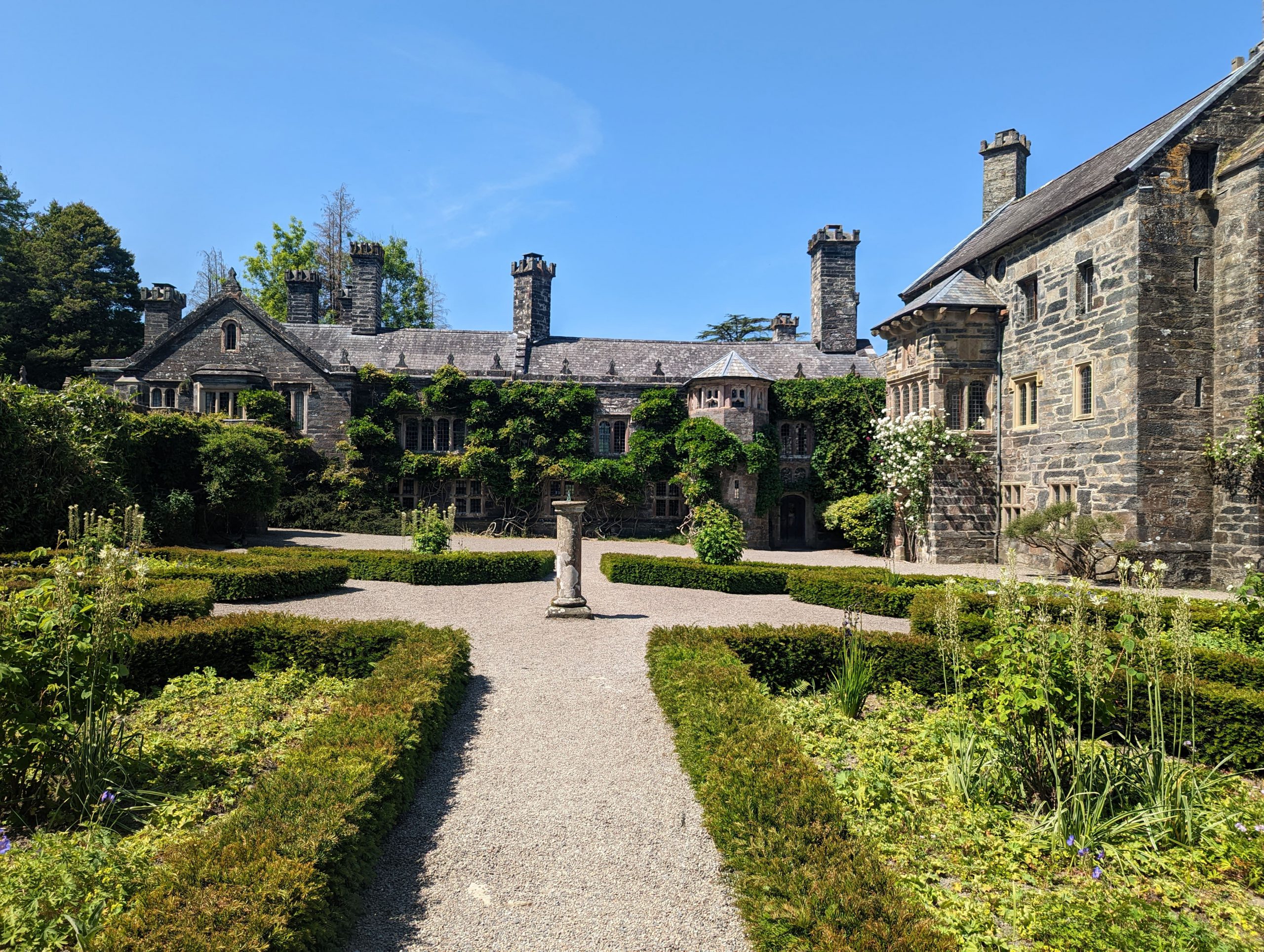Gwydir Castle is situated in the Conwy valley, Wales. It is positioned on the edge of the floodplain of the river Conwy and to the west lies the forested slopes of Gwydir Forest. Fortifications have been apparently present at this site since AD 600. The fortified manor house that we see today was built in the 16th century by the Wynn family.
| Built | 16th Century |
| Type | Fortified Manor |
| Condition | Intact |
| Ownership | Private |
| Access | Public – Admission Fee |
| Postcode | LL26 0PN |
Click here to explore Gwydir Castle with us and discover its history
Throughout the Early Middle Ages, several conflicts took place in the surrounding area involving the post-Roman kingdoms of Wales. Notably, in AD 610, a fierce battle occurred in close proximity, featuring Llywarch Hen, a bardic prince of Rheged. Additionally, a significant confrontation unfolded near Llanrwst in AD 954, involving the Kingdoms of Gwynedd and Deheubarth.
During the 14th century, the Welsh knight Hywel Coetmor, renowned for his participation in the Hundred Years’ War, served as a commander of longbowmen under Edward, the Black Prince. His notable achievements included his involvement in the Battle of Poitiers in 1356. Hywel Coetmor is credited with the construction of the Hall Range of the castle, which stands today as the oldest remaining section of the house at the site. Furthermore, he would later lend his support to the uprising led by Owain Glyndŵr.
Following the Wars of the Roses, the castle was rebuilt around 1490 by Meredith ap Ieuan ap Robert. Meredith was the founder of the Wynn dynasty and a prominent local supporter of King Henry VII. During this period, the fortified manor house underwent expansion, incorporating salvaged medieval materials from the dissolved Abbey of Maenan in the 1540s. Notably, the square turret located at the rear of the Solar Tower featured a spiral staircase that was sourced from the Abbey, and many elaborately carved stones can also be seen. Above the main entrance in the courtyard gatehouse, the initials of John Wyn ap Maredudd, along with the date 1555, are prominently displayed. In the late 16th century, a splendid Elizabethan porch and gardens were added, providing further enhancements to the castle’s aesthetics. Subsequent additions were made around 1828, following designs by Sir Charles Barry, the renowned architect responsible for the iconic Houses of Parliament.

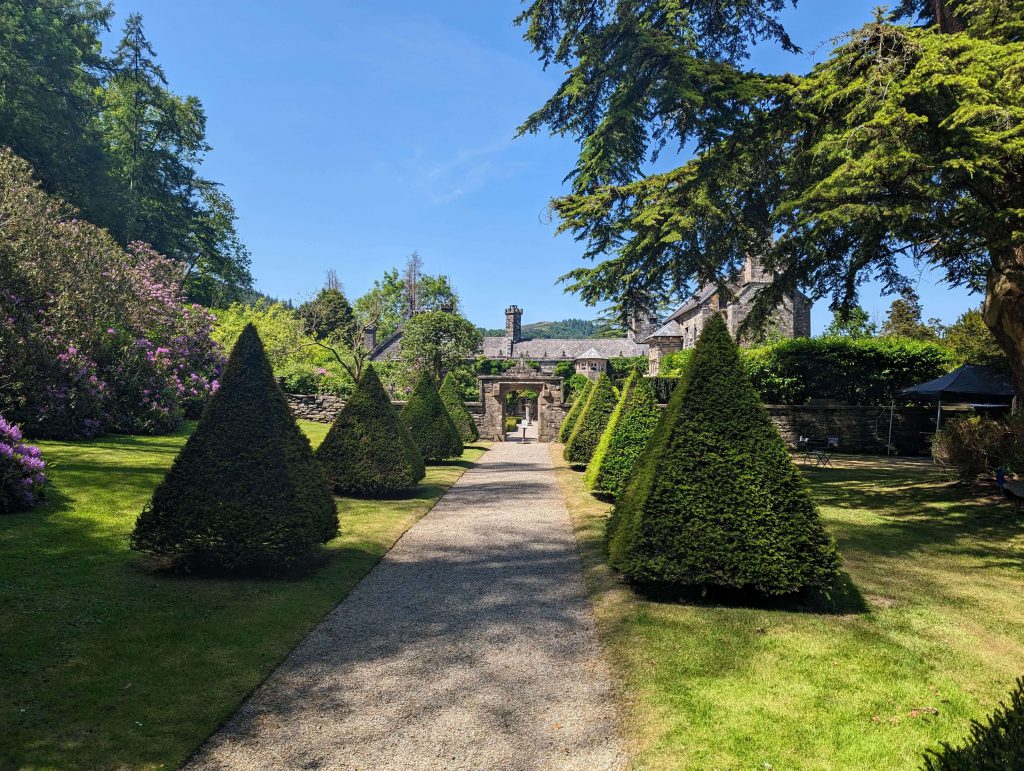
Gwydir Castle, home to Katherine of Berain in the 1570s, cousin of Queen Elizabeth I, and the castle has historical connections to the Babington Plot (1586) and the Gunpowder Plot (1605).
In 1645, King Charles I stayed at the castle and would have witnessed the presence of the magnificent cedar trees in the garden, which were planted to commemorate his marriage to Henrietta Maria in 1625.
Another significant visit to Gwydir Castle took place in 1899 when the Duke and Duchess of York, who later became King George V and Queen Mary, stayed there. In honour of their visit, a series of Welsh oaks were planted in the grounds.
Among the remarkable trees within the castle’s grounds, there is a noteworthy yew tree known as the ‘Lover’s Yew.’ It is estimated to be between 600 to 1000 years old, adding to the castle’s natural beauty and historical charm.
Under the ownership of the esteemed Wynn family for two centuries, Gwydir Castle became a prominent cultural and political hub in Wales. Sir John Wynn, a key figure, was granted the distinction of being Wales’ first joint Baronet in 1611. He documented the early years of the family in his renowned work, the ‘History of the Gwydir Family,’ which was written around 1600. During the 17th century, a branch of the Wynn family established roots in America, and their lineage continues to thrive to this day.
The fourth and final Wynn baronet, Sir Richard, succumbed to the plague in 1674. His daughter, Lady Mary, married Robert Bertie, subsequently Duke of Ancaster. From the late 17th century until 1895, Gwydir Castle was owned by the Willoughby de Eresby family. The family primarily resided at Grimsthorpe Castle in Lincolnshire but used the castle as a summer residence from 1828.
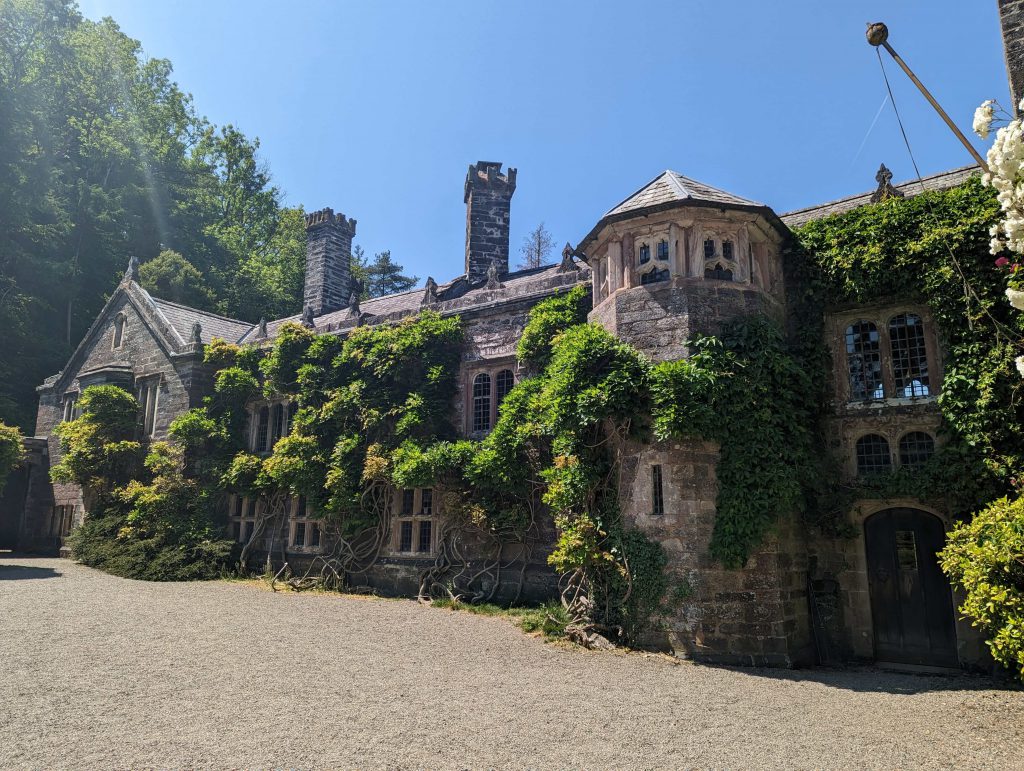
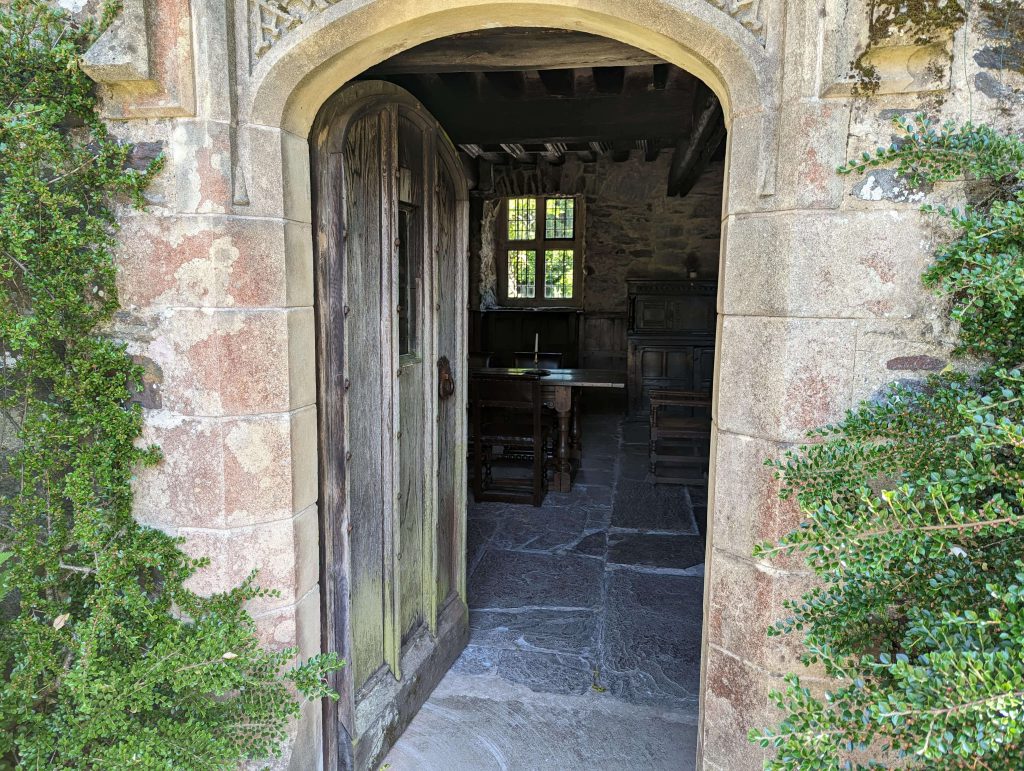
In 1895, the castle was acquired by Charles Wynn Carrington, a cousin of the family who would later become the Marquis of Lincolnshire. He made Gwydir his primary residence until he sold the castle and its contents in 1921. The contents sold included the gilded panelling from the main dining room, dating back to the 1640s. It was sold at auction to William Randolph Hearst, a prominent American press baron. Following Hearst’s passing, the panels were inherited by the Metropolitan Museum of Art, which placed them into storage.
In 1922, a devastating fire caused extensive damage to the Solar Tower and left it without a roof. Subsequently, another fire occurred in the West Wing, rendering the castle uninhabitable. As a result, Gwydir Castle was abandoned and remained unoccupied until 1944. In that year, Arthur Clegg, a retired bank manager, purchased the castle. Together with his wife and son, they embarked on a 20-year renovation project.
Gwydir Castle is currently under private ownership by Peter Welford and his wife, Judy Corbett. They acquired the castle in 1994 and initiated an extensive restoration program with the aim of returning the 15th-century Tudor castle to its original splendour. Their efforts have focused on preserving and reviving the castle’s historical features, ensuring its enduring beauty for future generations.
Peter Welford and Judy Corbett accomplished the remarkable feat of tracking down the missing dining room panels and engaging in negotiations with the museum. Ultimately, they succeeded in repurchasing the panels from the museum and carefully reinstated them in their original location. The restoration of the dining room was completed, and in July 1998, it was ceremoniously reopened with the presence of the Prince of Wales, marking a significant milestone in the castle’s restoration journey.
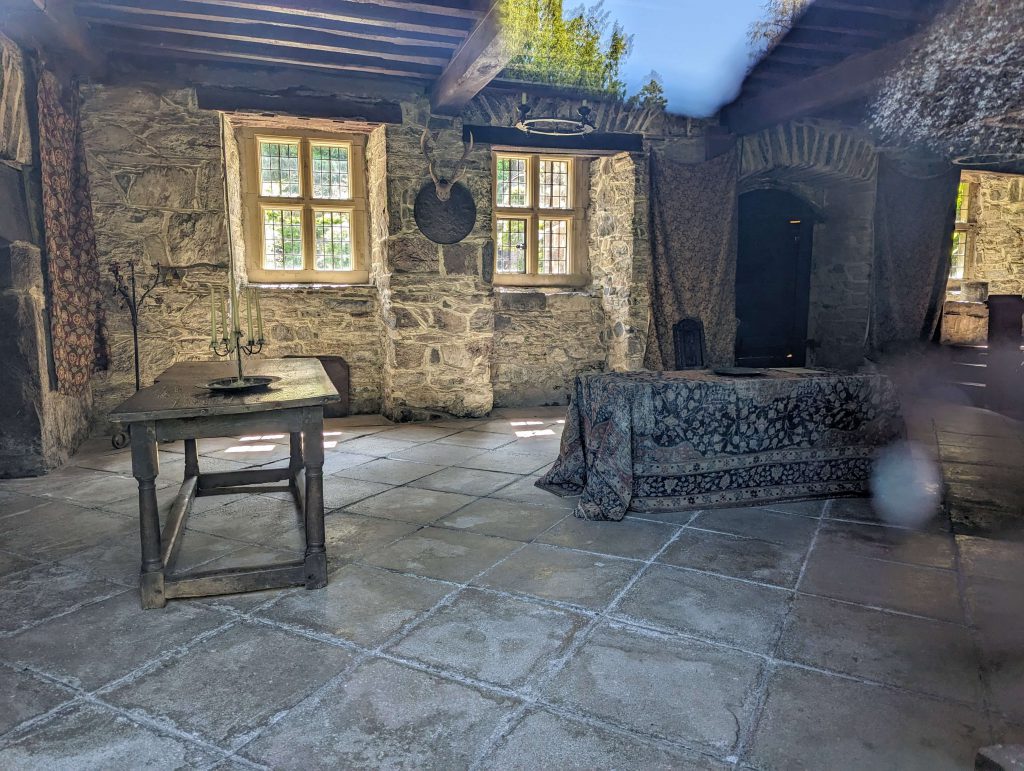
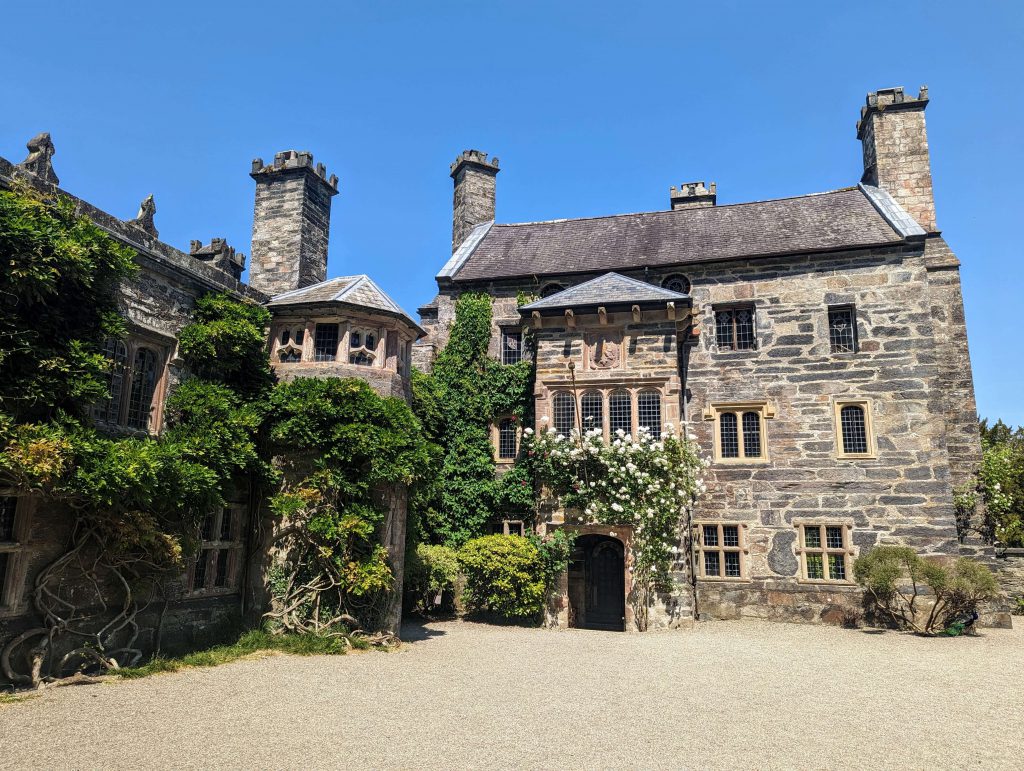
Ghosts at Gwydir Castle
Wandering about the castle grounds we encountered some rather noisy but very beautiful residents, the castle’s flock of peacocks who have been guardians of the castle since 1828. The castle is renowned for also having ghostly residents, with sightings dating back to the 1800’s. The most noted is of a young woman whose presence haunts the corridors of the north wing and the panelled corridor connecting the Hall of Meredith and the Great Chamber. Apparently Sir John Wynn seduced a serving maid at Gwydir in his youth. As their relationship grew complicated, the story goes that he tragically murdered her and concealed her body within a hidden void in the chimney breast, forever entombing her within the castle walls. Significantly, a hollowed-out space, ‘priest hole’ was found earlier this century within the large chimney breast which backs onto the Ghost Room at the hall end of the passage. Other ghostly presences include Sir John himself, a ghost dog and children have been heard crying.
Visit Gwydir Castle’s website for more information on visiting http://www.gwydircastle.co.uk/

